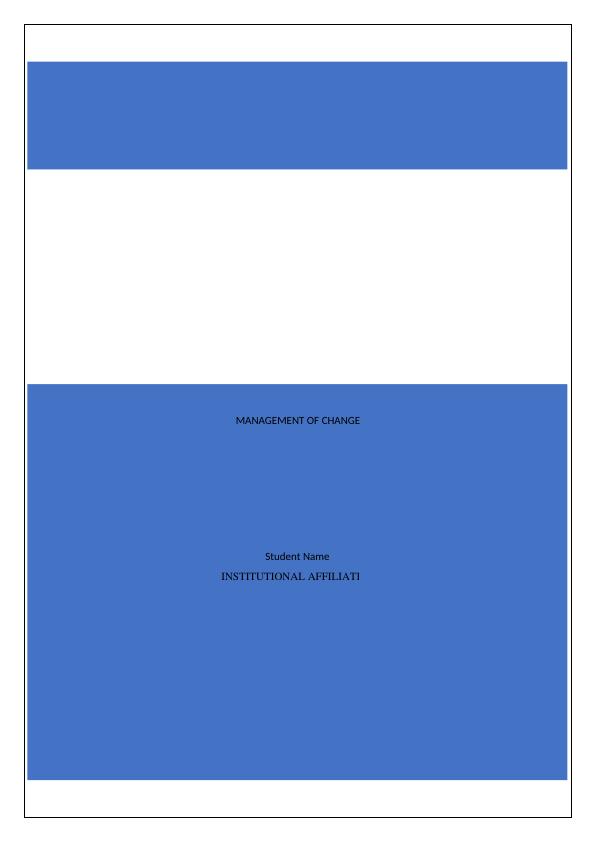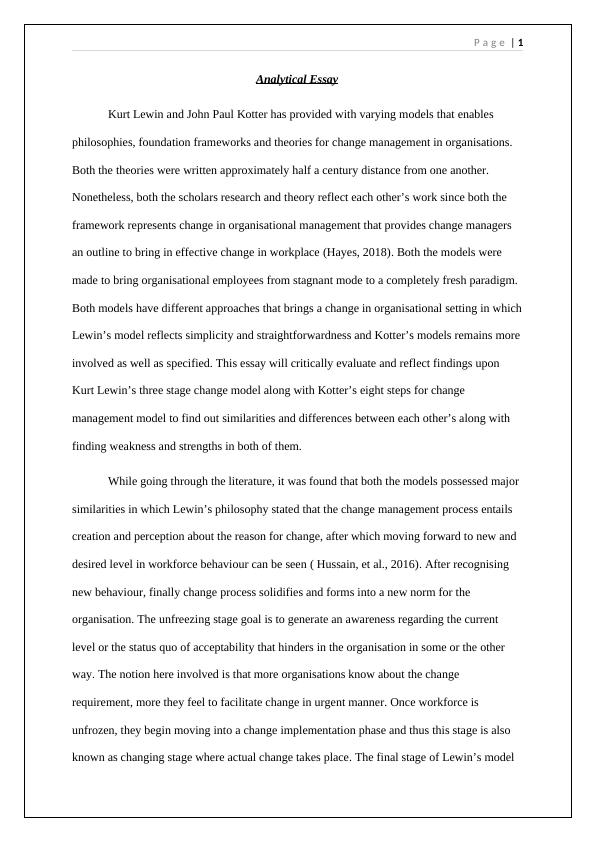Comparison of Kurt Lewin's Three-Step Change Model and Kotter's Eight-Step Change Management Model
8 Pages2256 Words293 Views
Added on 2023-06-05
About This Document
This analytical essay critically evaluates and compares Kurt Lewin's three-step change model and Kotter's eight-step change management model, highlighting their similarities, differences, strengths, and weaknesses.
Comparison of Kurt Lewin's Three-Step Change Model and Kotter's Eight-Step Change Management Model
Added on 2023-06-05
ShareRelated Documents
End of preview
Want to access all the pages? Upload your documents or become a member.
Management of Change: Lewin’s Three and Kotter’s Eight Step Model
|6
|1978
|120
Comparison between Kotter’s and Lewin’s model change.
|6
|1299
|50
Knowledge Based on Change Management Concept
|4
|1234
|13
Lewin's Three Step Process and Kotter's 8 Step Model of Change Report 2022
|7
|1493
|23
Healthcare Strategic Plan (pdf)
|8
|2022
|153
How to Implement Change with Kotter's 8-Step Change Model
|6
|1324
|17



